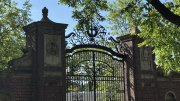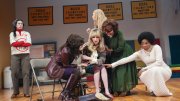In late 2008, at the depths of the financial crisis, the University borrowed $2.5 billion, expensively (at tax-exempt and taxable interest rates of 5.4 percent and 5.8 percent) to shore up its liquidity and provide flexibility within the endowment, and for other defensive purposes. Interest expense, about 4.2 percent of the budget in fiscal year 2008, shot painfully up to 7.1 percent of constrained spending two years later. Harvard retained its top-tier AAA/Aaa credit rating—important for some endowment-management strategies, and useful for restraining future borrowing costs. Administrators made it clear that they were henceforth debt-averse, and that deans bent on building something should secure donations to do so.
Fast-forward to 2015. The Harvard Campaign has already secured more than $6 billion (see “$6 Billion-Plus”), and will be the largest of its kind in higher-education history. The endowment has exceeded its pre-crisis peak (at least nominally; see “Endowment Gain—And Gaps”). So it may seem counterintuitive to borrow again, but the logic suggests that the University can, and will, for academic purposes—sooner rather than later.
Plans have been unveiled for the huge science and engineering center in Allston, where much of the engineering and applied sciences faculty is to be housed before the end of the decade (see “Brevia”). Fundraisers are soliciting for gift support, but absent some deus ex machina (and the campaign has already produced several), debt will be needed to get the job done. The Faculty of Arts and Sciences is redoubling appeals to pay for House renewal; but according to its financial statements, it continues to decapitalize endowment appreciation, to the tune of some hundreds of millions of dollars, to fund that and other priorities—perhaps a significant reason its endowment is still a half-billion dollars below the 2008 level. Its House renewal plan explicitly envisions use of endowment funds, gifts, reserves, cash from operations, and “incremental” long-term debt to finish the job. And there are other high priorities for gifts.
Borrowing funds might complicate the fundraisers’ story somewhat. But many of Harvard’s most significant donors are financially sophisticated investors who use debt to achieve returns; they will understand. Rates for Harvard to borrow long term are in the range of 4 percent—below endowment returns. It would be unfortunate to pay top dollar in 2008 and then miss the low point for loan costs today. And the rating agencies have indicated they are in a tolerant mood, given the University’s strengthened balance sheet and financial disciplines. The fundraising success enables borrowing, rather than precluding it.
~ John S. Rosenberg, Editor








